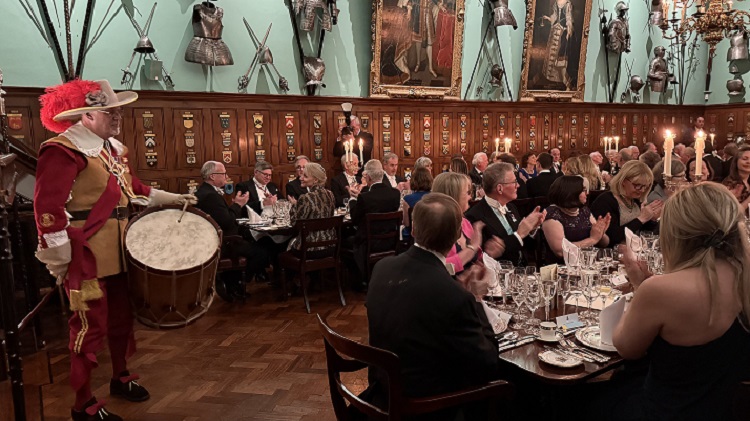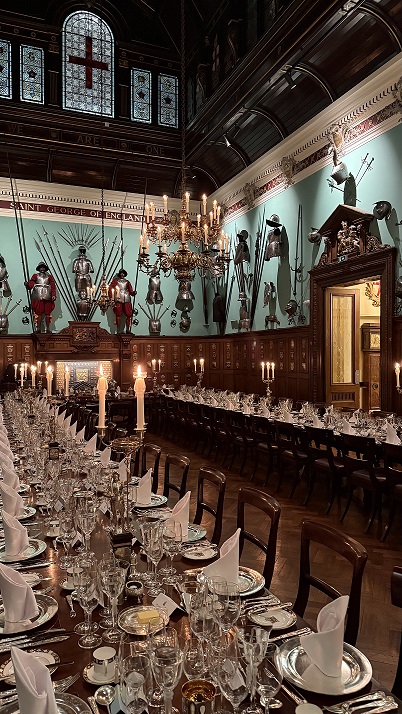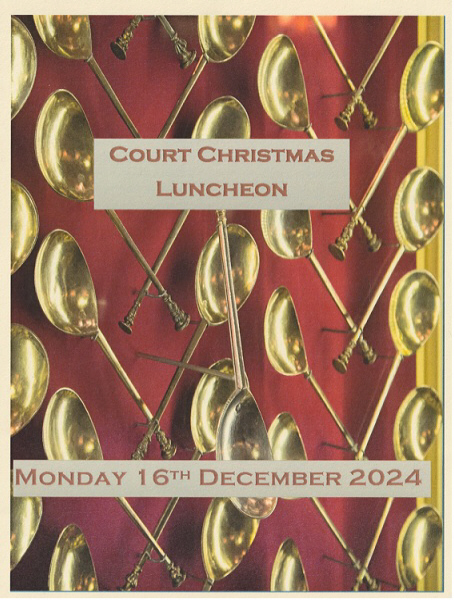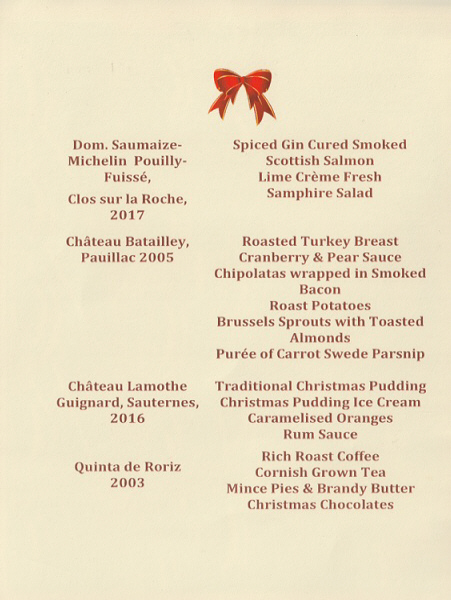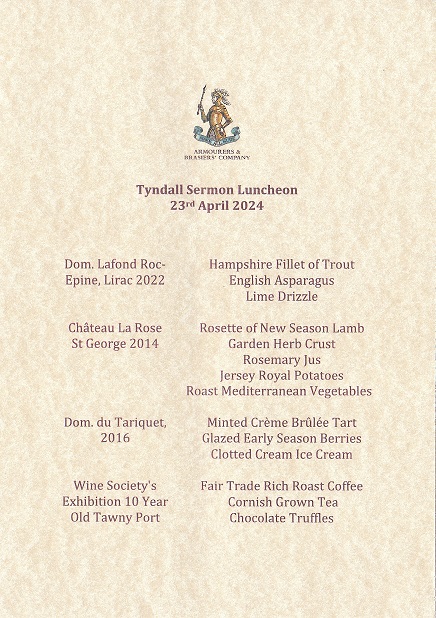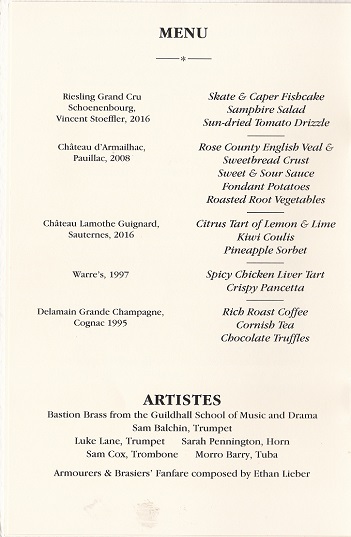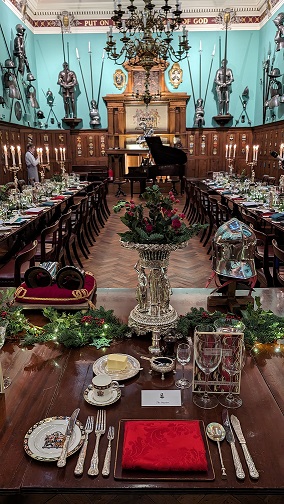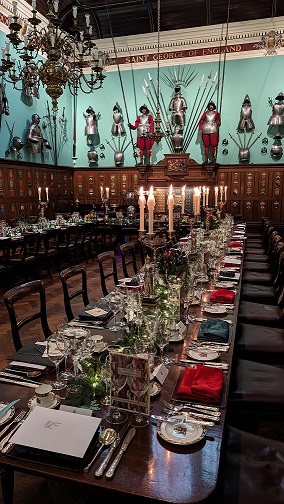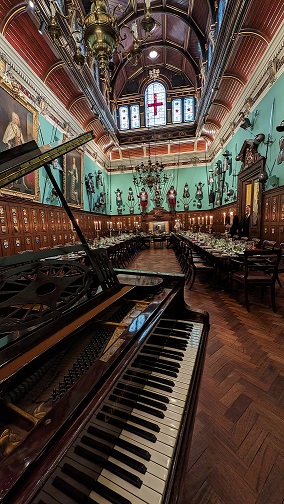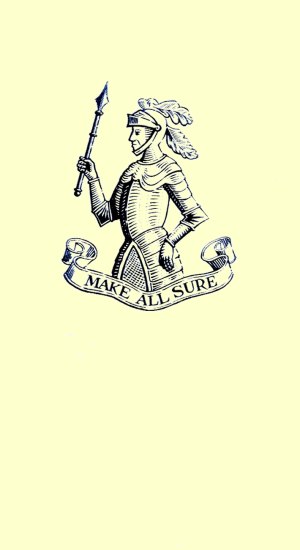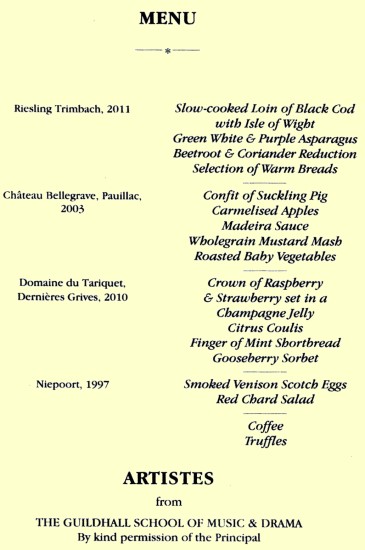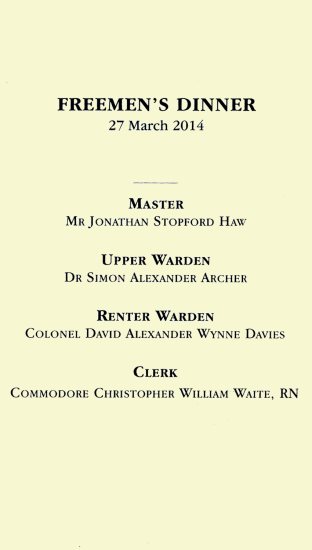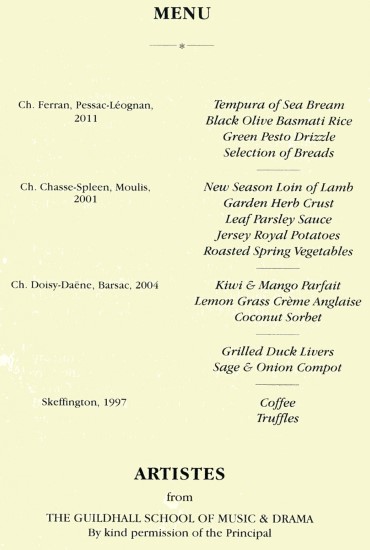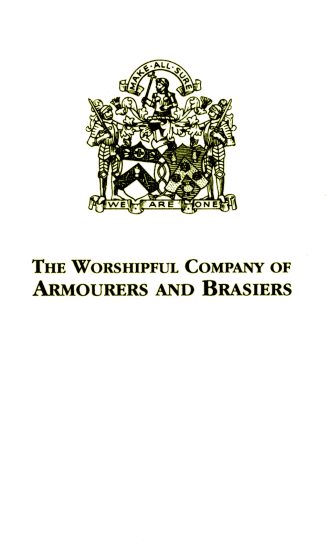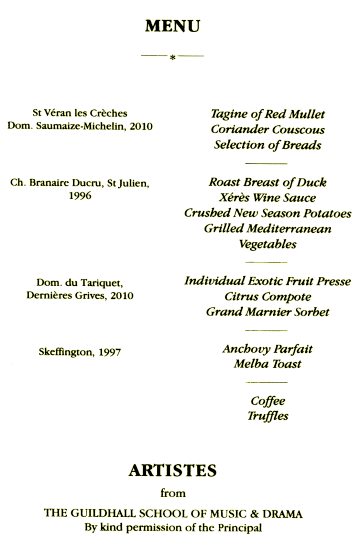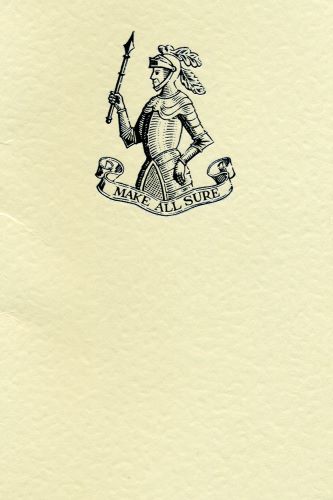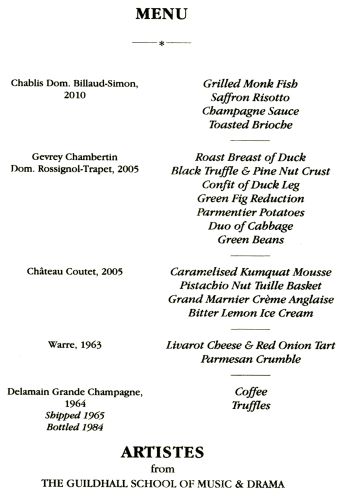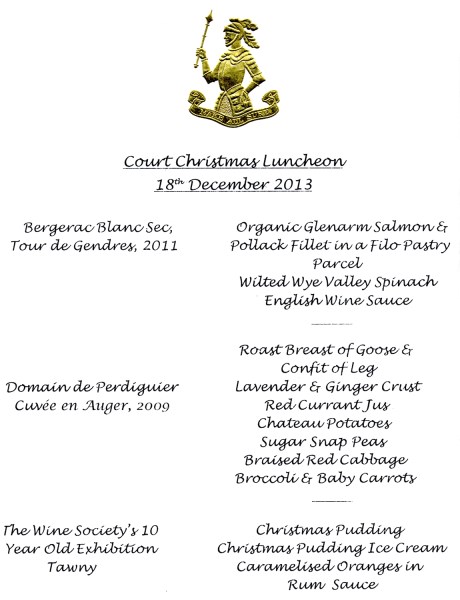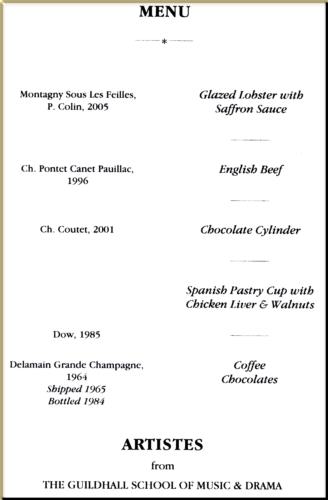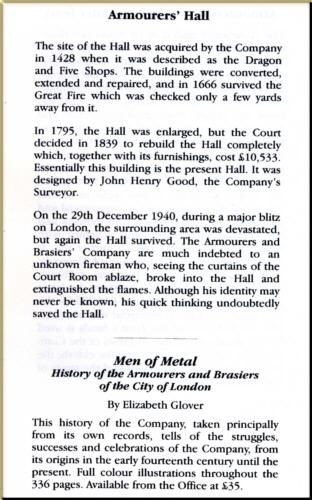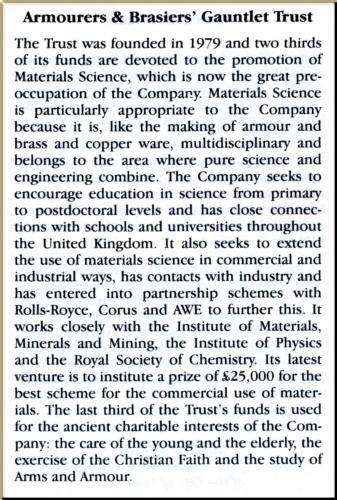
Tel: 020 7620 1818 email: cookandbutler@btconnect.com
The Worshipful Company of Armourers and Brasiers
www.armourershall.co.uk
Court Dinner
26th June 2025, Armourers' Hall, City of London
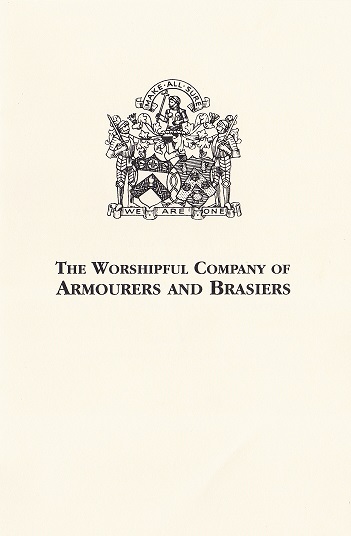
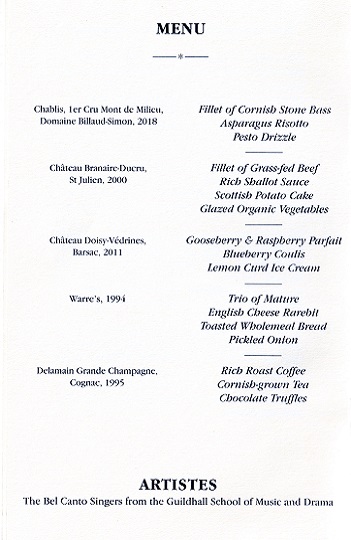
![]()
Small Court Dinner
5th June 2025, Armourers' Hall, City of London
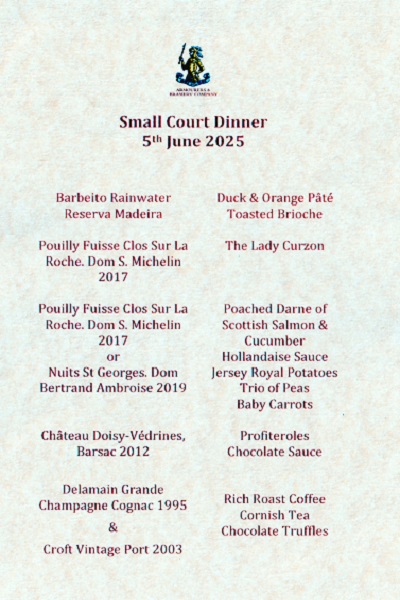
![]()
Spring
Court Dinner
29th May 2025, Armourers' Hall, City of London

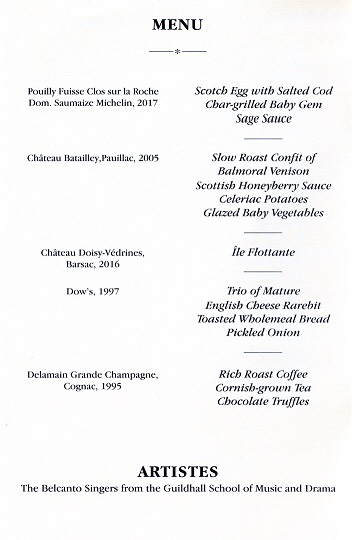
![]()
Livery Dinner
30th April 2025, Armourers' Hall, City of London

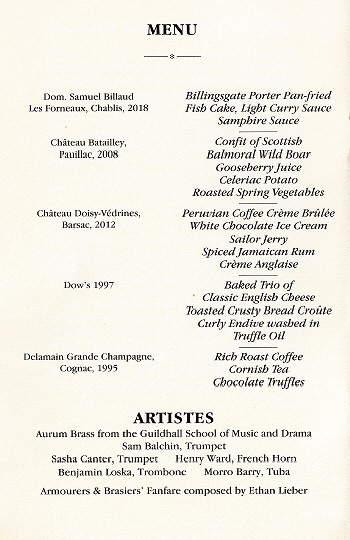
![]()
Tyndall Sermon Luncheon
23rd April 2025, Armourers' Hall, City of London

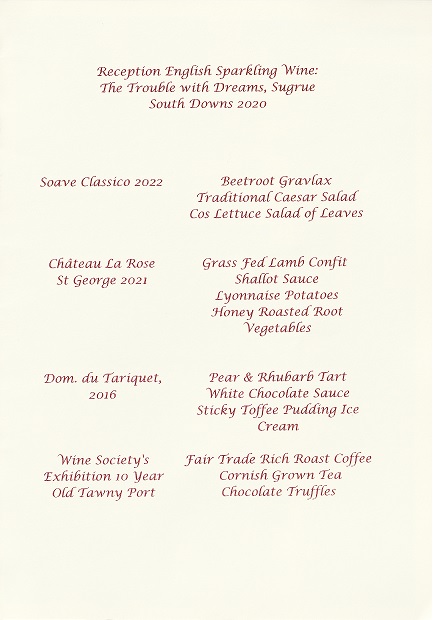
![]()
Freemen's Dinner
20th March 2025, Armourers' Hall, City of London

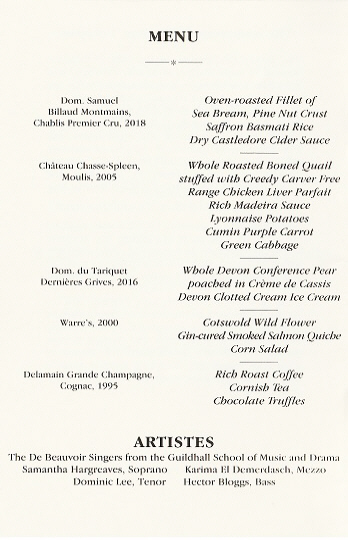
![]()
Livery Dinner
20th February 2025, Armourers' Hall, City of London


![]()
Court Dinner
16th January 2025, Armourers' Hall, City of London
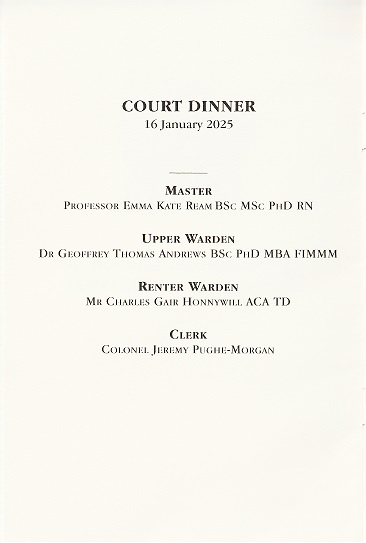
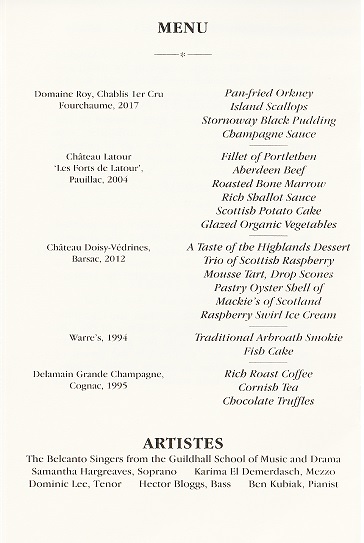
![]()
Court Christmas Dinner
16th December 2024, Armourers' Hall, City of London
![]()
Livery Dinner
14th November 2024, Armourers' Hall, City of London

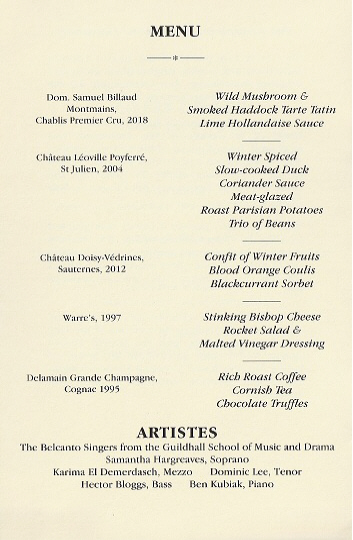
![]()
Tyndall Sermon Luncheon
23rd April 2024, Armourers' Hall, City of London
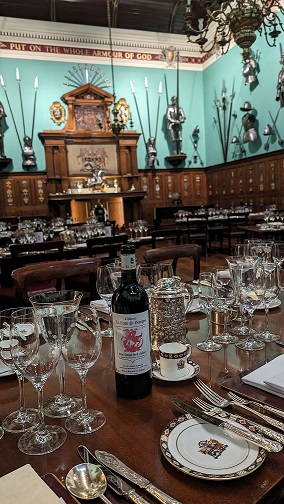
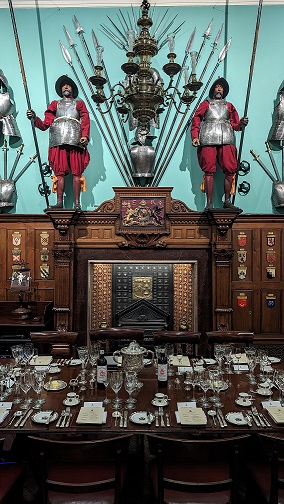
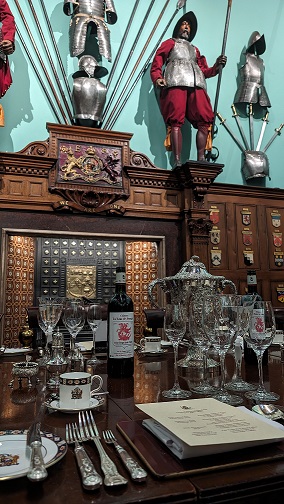
Piano Recital and Dinner in Honour of Lady Lingfield
26th April 2024, Armourers' Hall, City of London
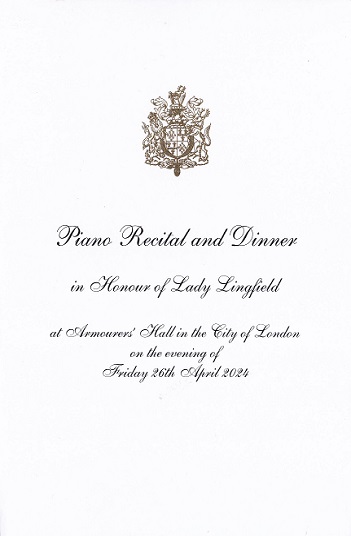
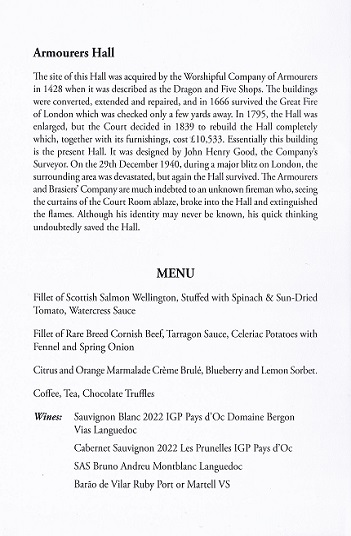
![]()
Livery Dinner
25th April 2024, Armourers' Hall, City of London
![]()
Freemen's Dinner
21st March 2024, Armourers' Hall, City of London

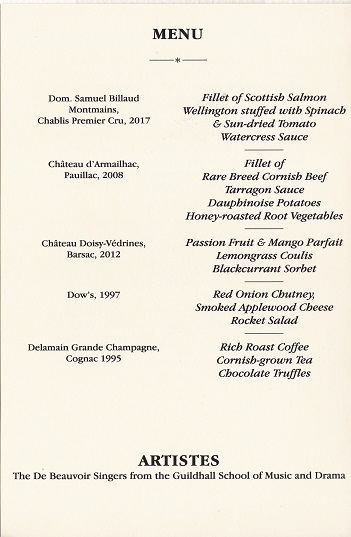

Livery Dinner
22nd February 2024, Armourers' Hall, City of London

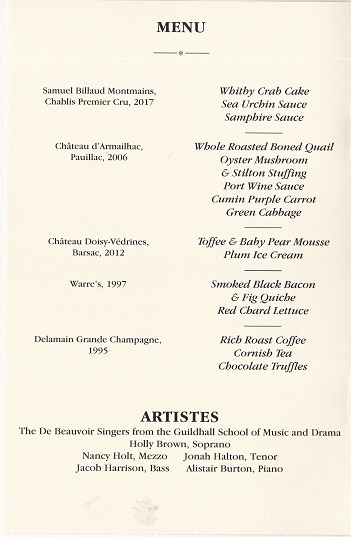
![]()
Livery Dinner
18th January 2024, Armourers' Hall, City of London

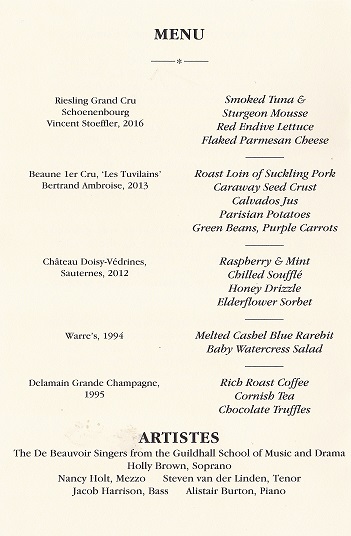
![]()
Court Christmas Luncheon
18th December 2023, Armourers' Hall, City of London
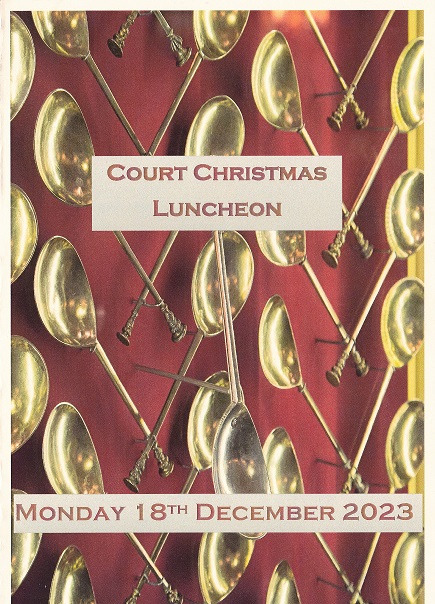
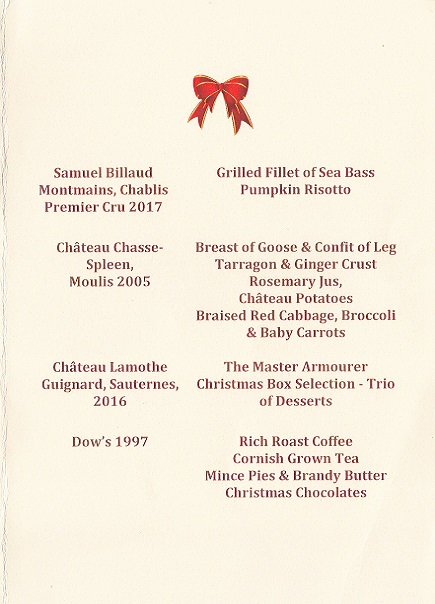
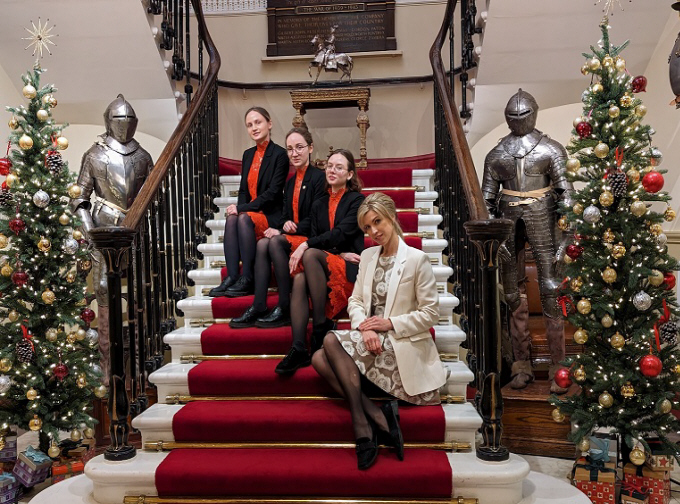
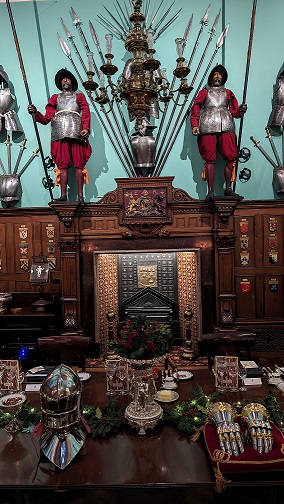
The Bermuda Society
24th October 2023, Armourers' Hall, City of London
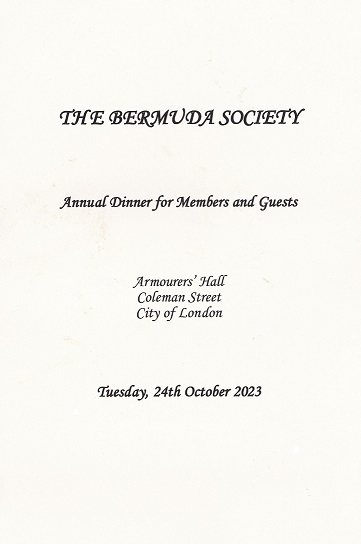
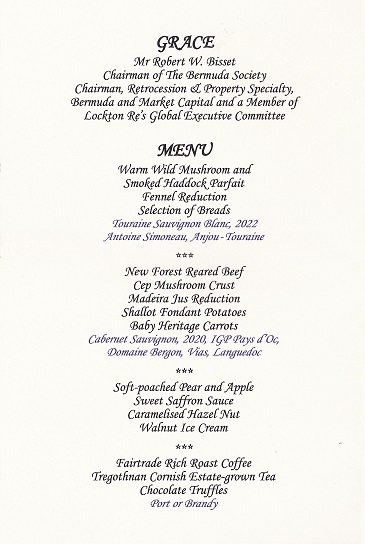

CITO Lodge Ladies Night
January 21st 2023, Armourers' Hall, City of London

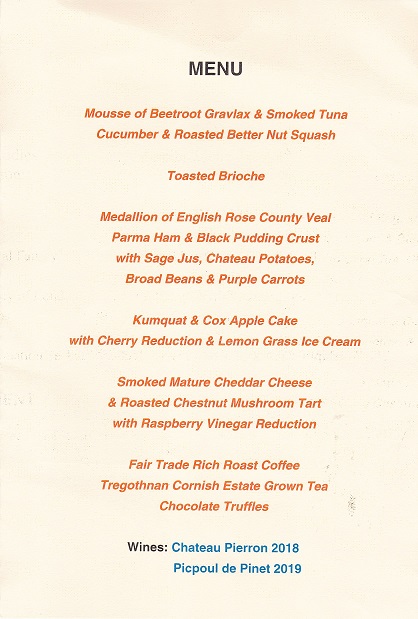

Livery Dinner
November 17th 2022, Armourers' Hall, City of London
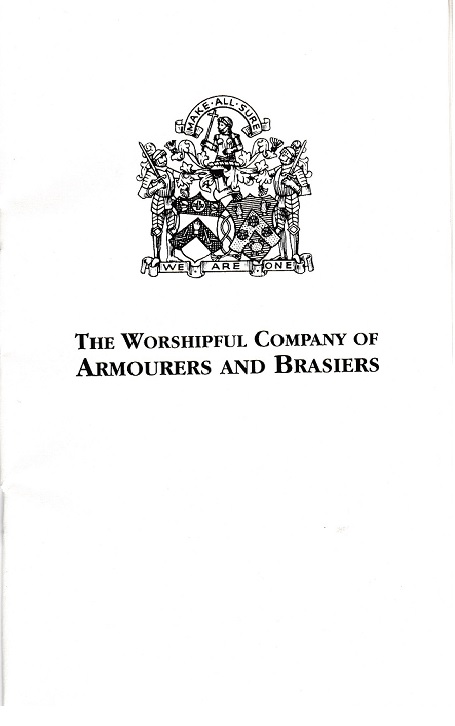
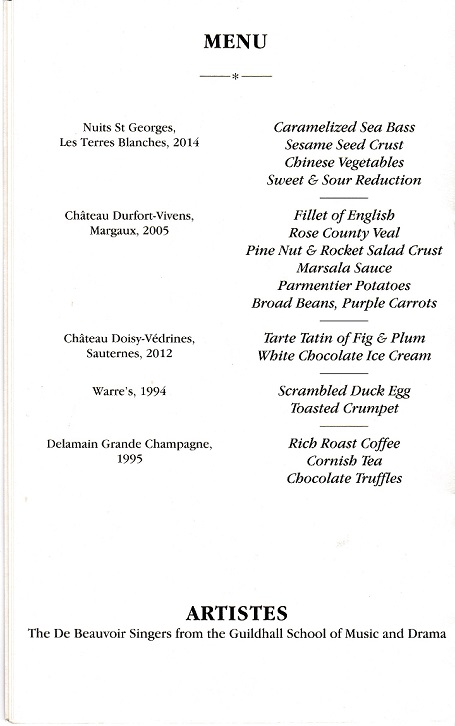

Court Dinner
July 6th 2022, Armourers' Hall, City of London
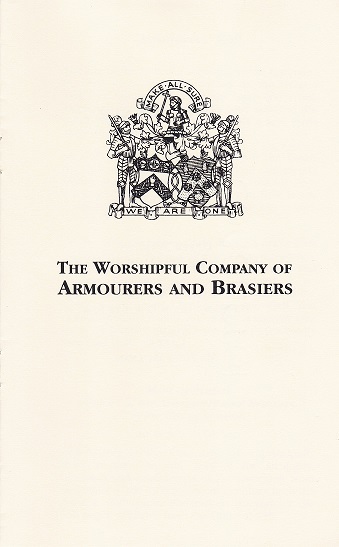
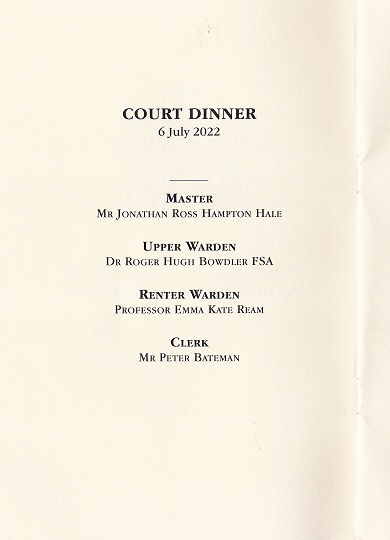

Court Spring Dinner
May 5th 2022, Armourers' Hall, City of London

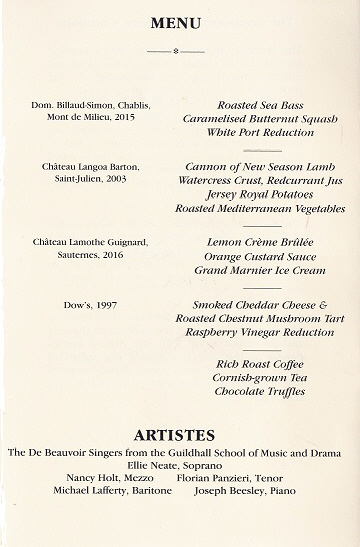

Livery Dinner
February 24th 2022, Armourers' Hall, City of London

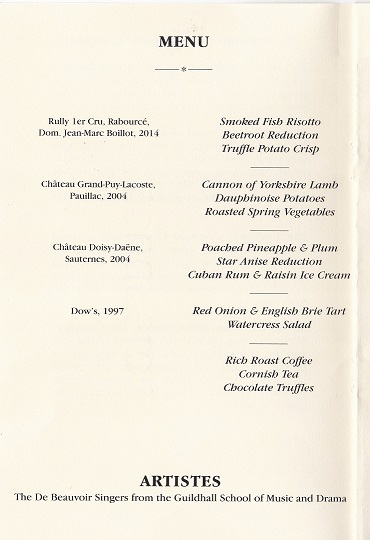

Lancastrians Annual City Dinner
November 19th 2021, Armourers' Hall, City of London
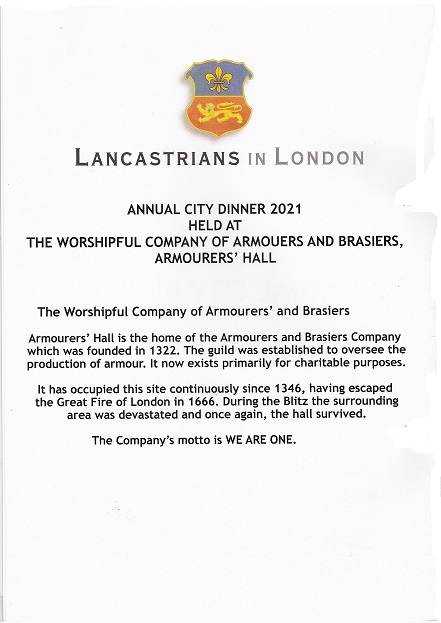
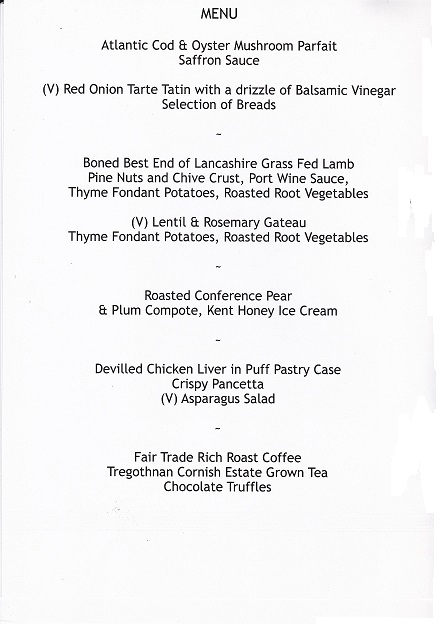
Court Dinner
October 5th 2021, Armourers' Hall, City of London
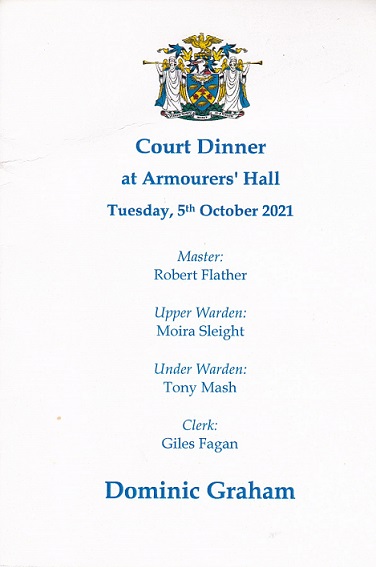
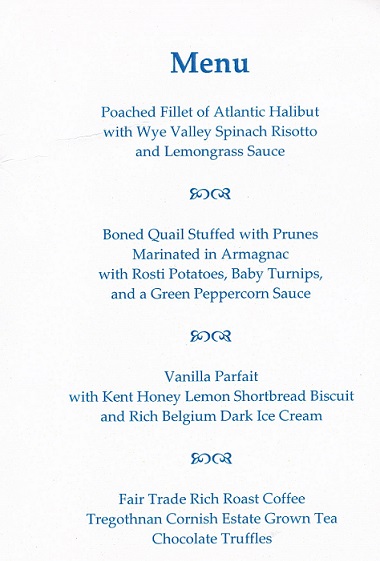

Election of Sheriffs Luncheon
June 2018, Armourers' Hall, City of London
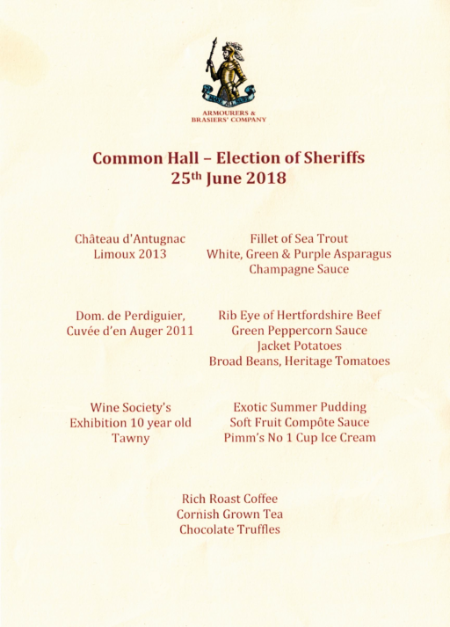

Court Spring Dinner
May 2018, Armourers' Hall, City of London
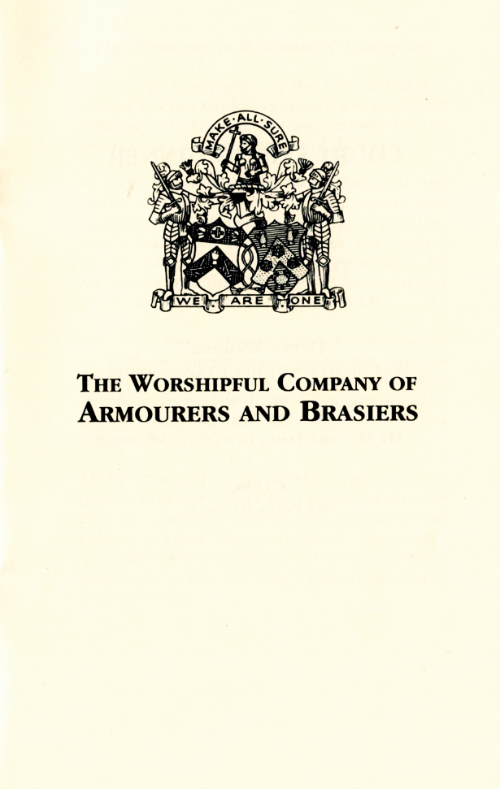
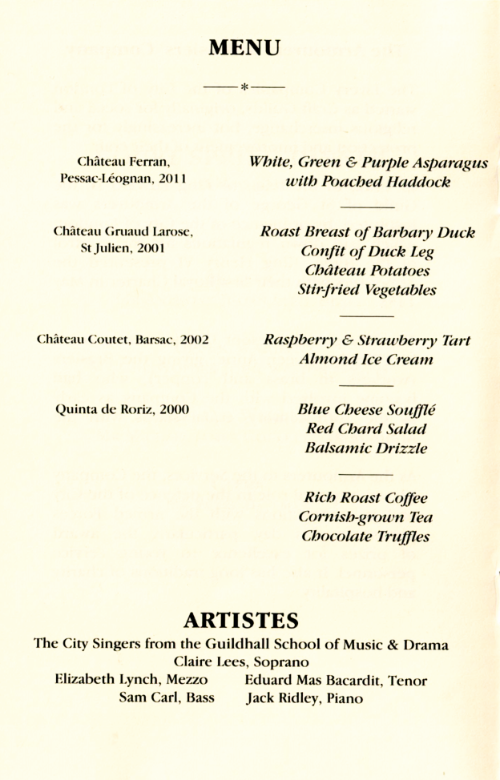

Freemen's Dinner
March 2018, Armourers' Hall, City of London
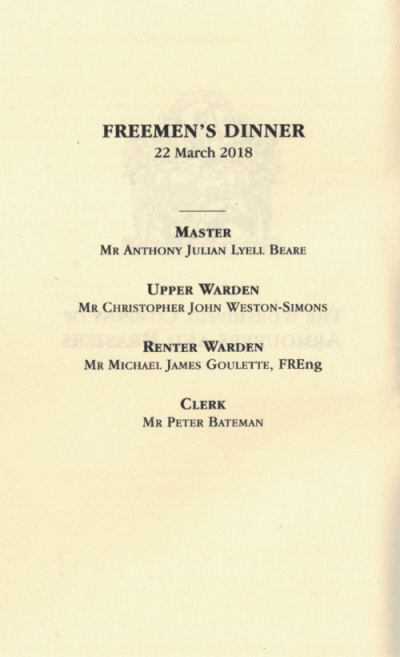
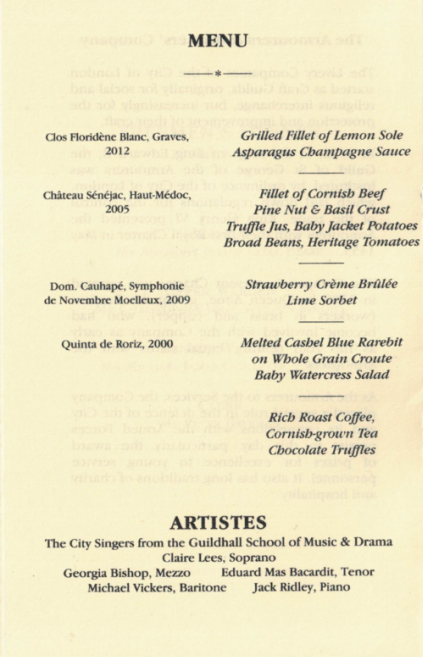

United Guild's Service Luncheon
March 2018, Armourers' Hall, City of London
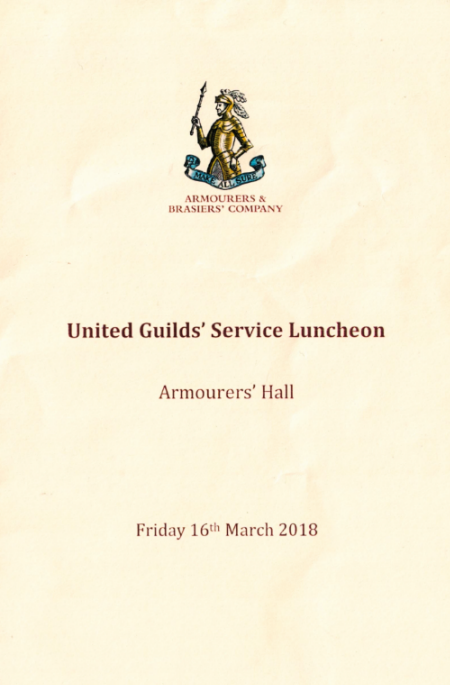
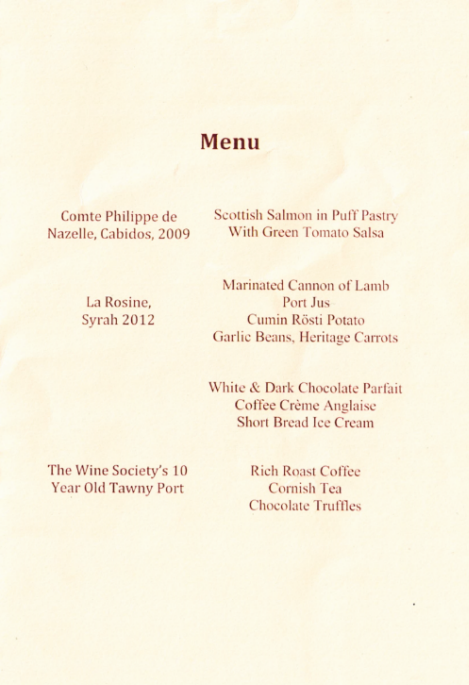

Livery Dinner
February 2018, Armourers' Hall, City of London
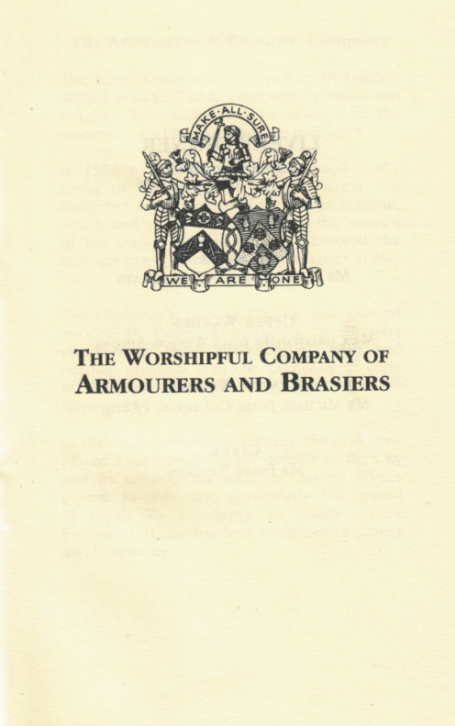
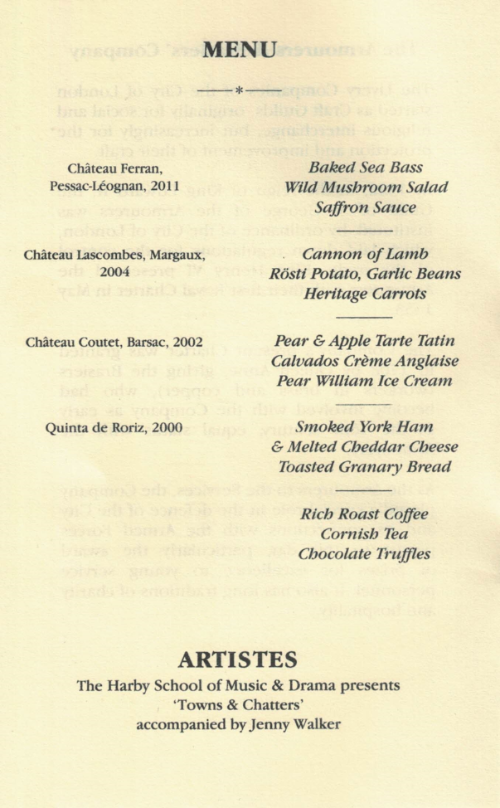

Livery Dinner
November 2017, Armourers' Hall, City of London
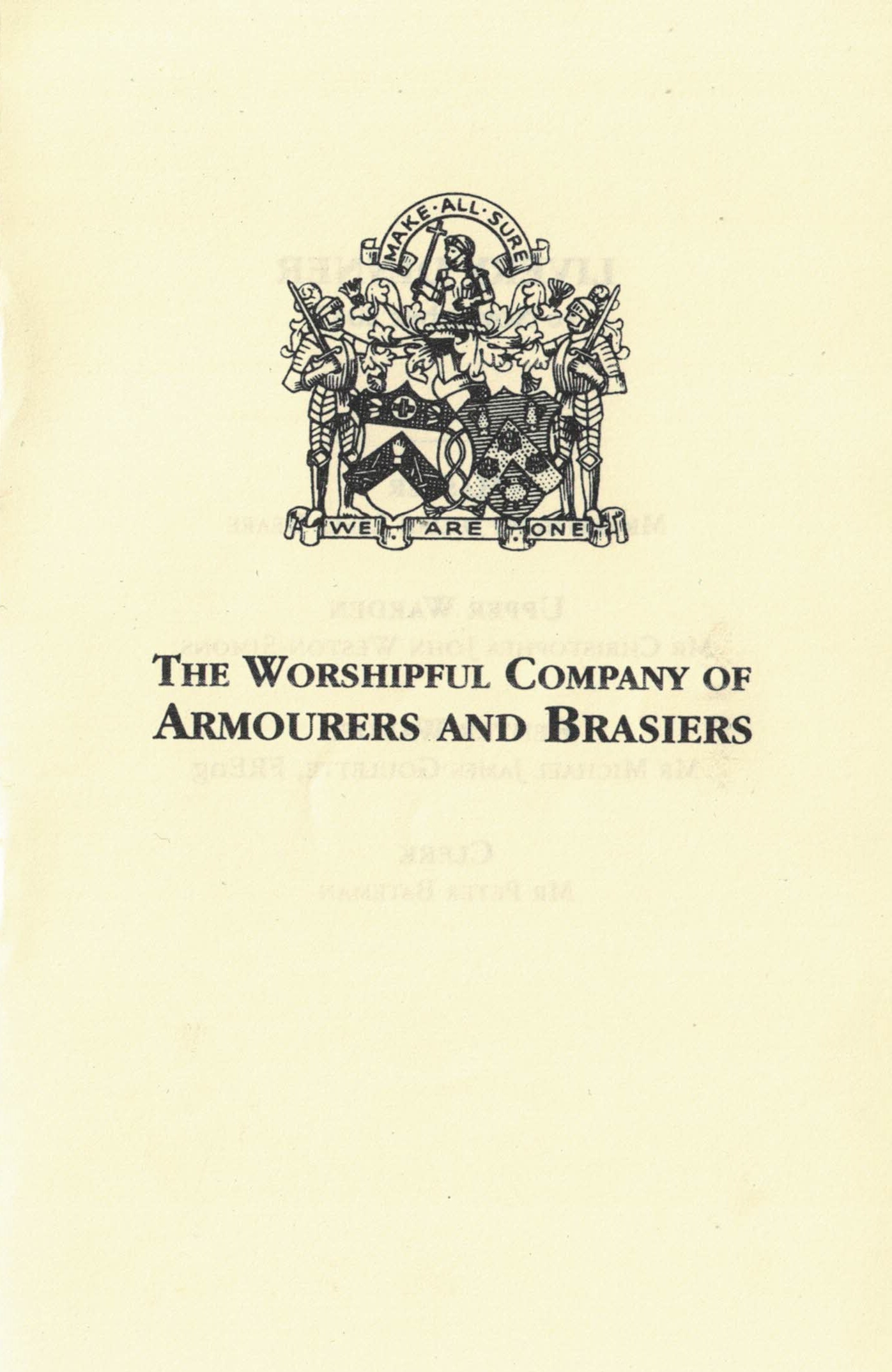
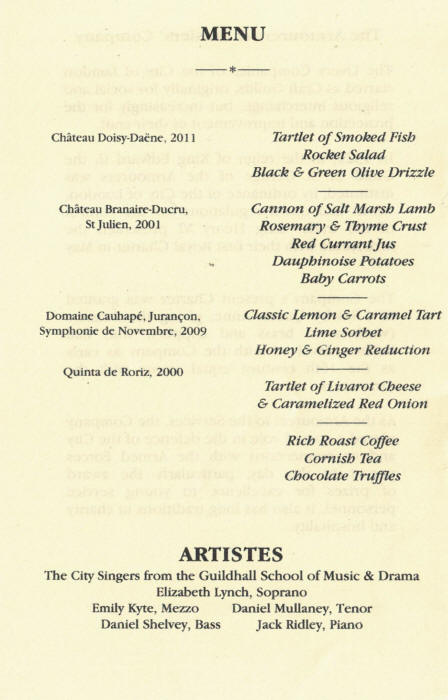
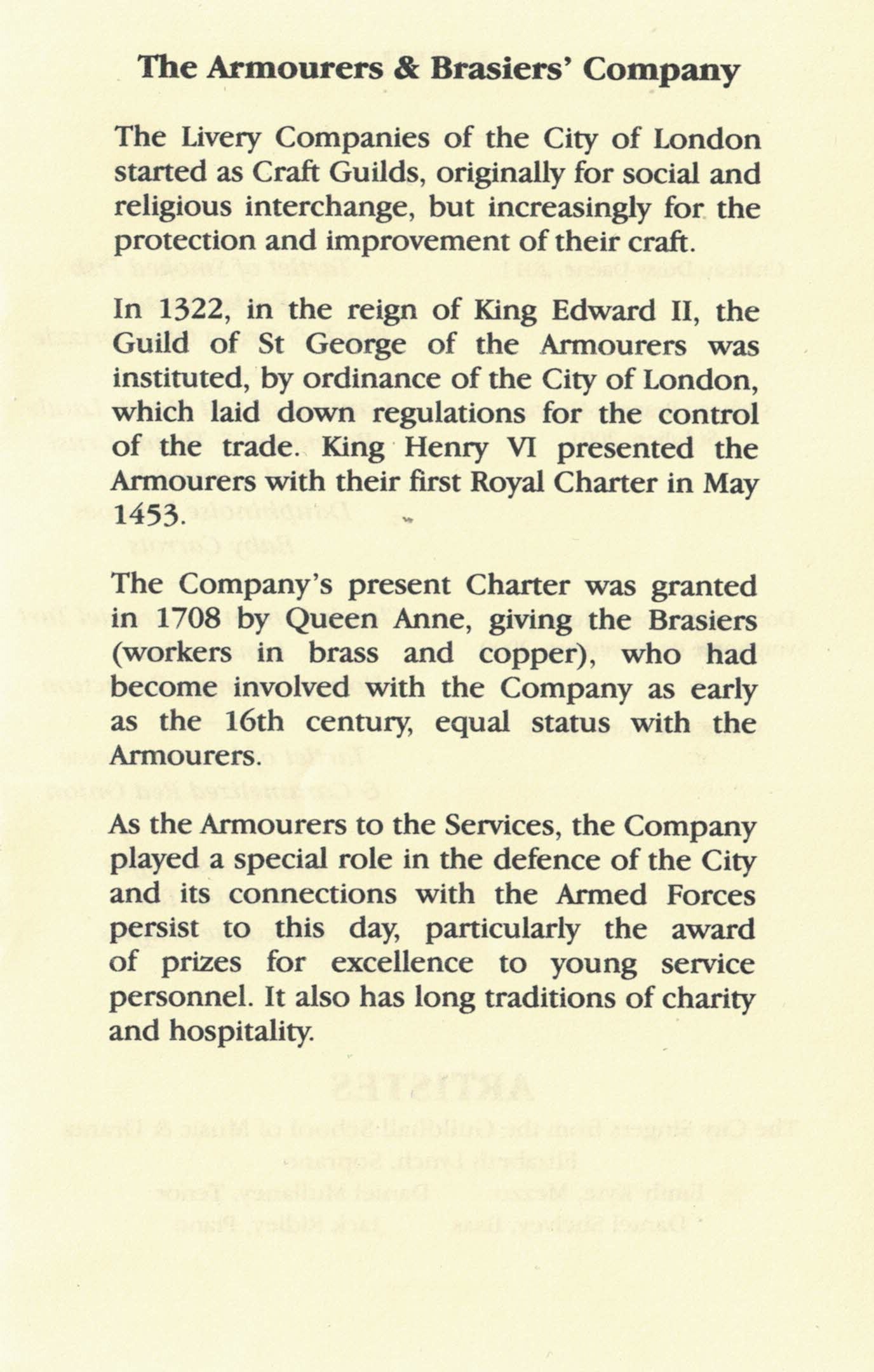

Gauntlet Trust Subscribtion Supper
September 2017, Armourers' Hall, City of London
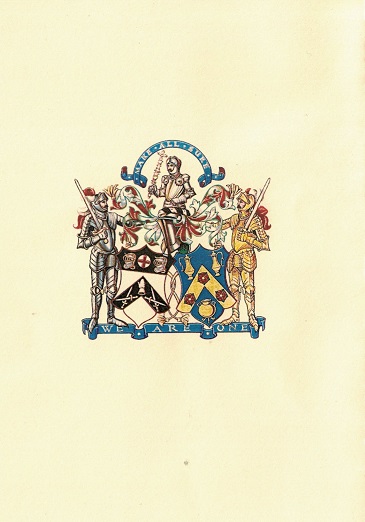
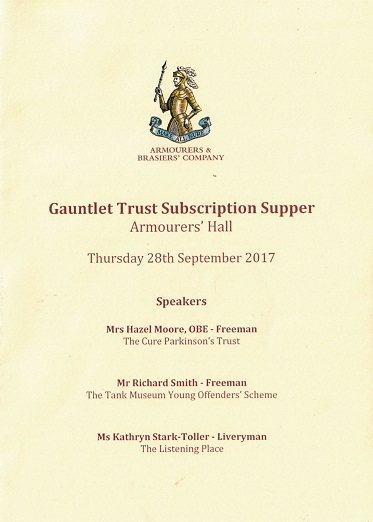
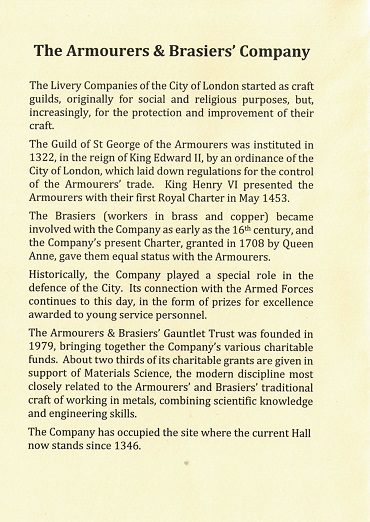
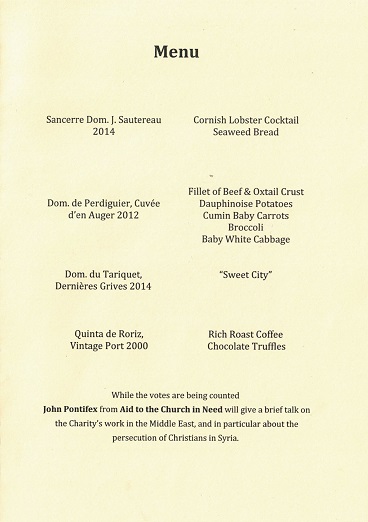
Company Business Luncheon
March 2017, Armourers' Hall, City of London
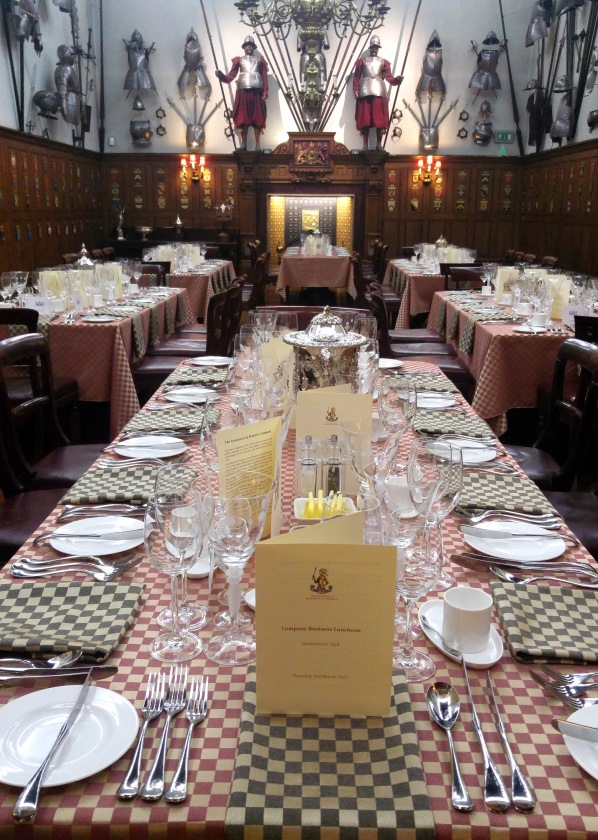
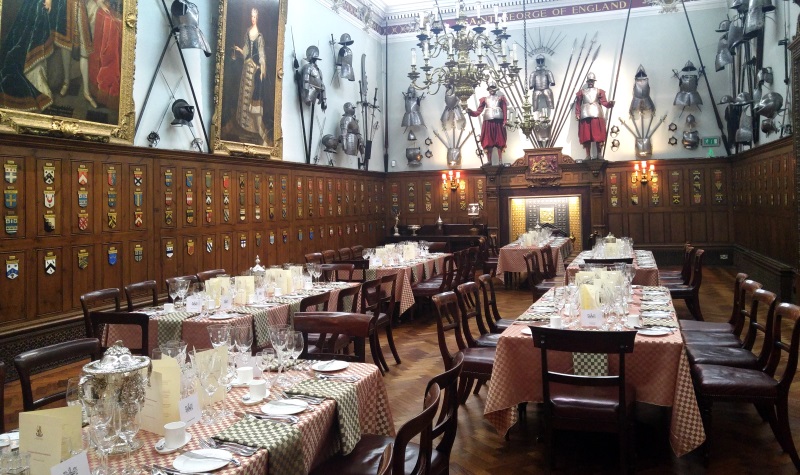

Freemen's Dinner
March 2017, Armourers' Hall, London
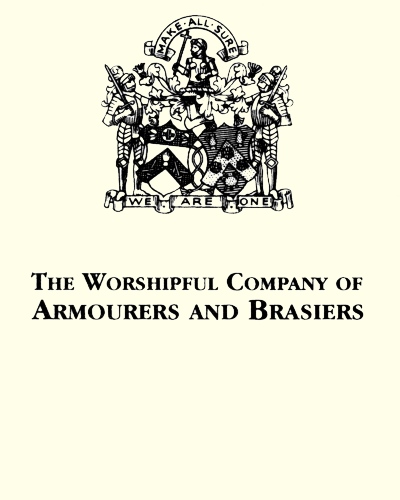
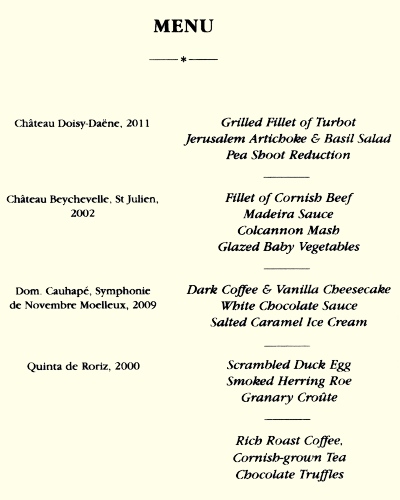

Tyndall Sermon Luncheon
April 2016, Armourers' Hall, City of London
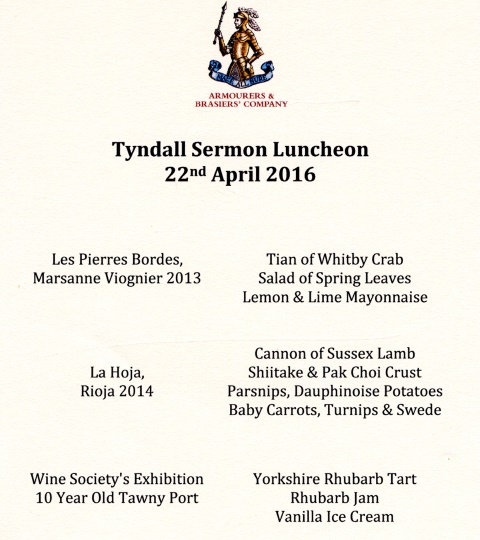

Roger Tyndall was Master of The Armourers' Company in 1559, 1567 and 1577. His will requested that a “godly sermon" should be preached annually on St George's Day by "a godly learned preacher of King's College in Cambridge, or some other learned man", to be attended by the Livery.

Small Court Dinner
October 2015, Armourers' Hall, London
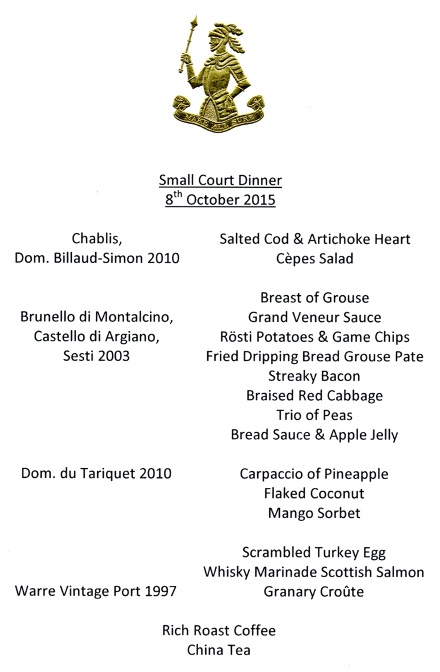

Court Dinner
January 2015, Armourers' Hall, London
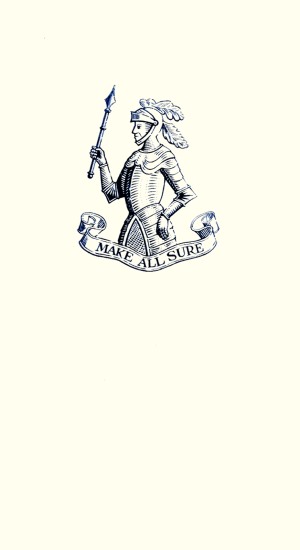
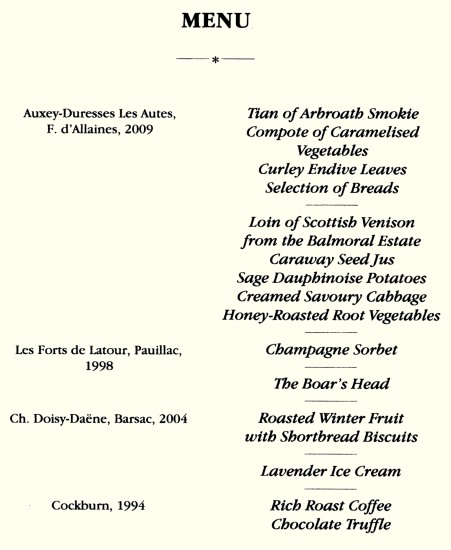

Livery Dinner
November 2014, Armourers' Hall, City of London
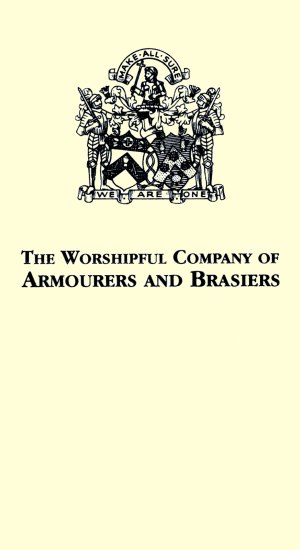
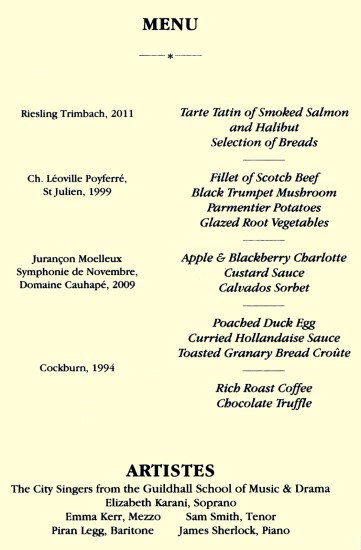

Court Dinner
June 2014, Armourers' Hall, London
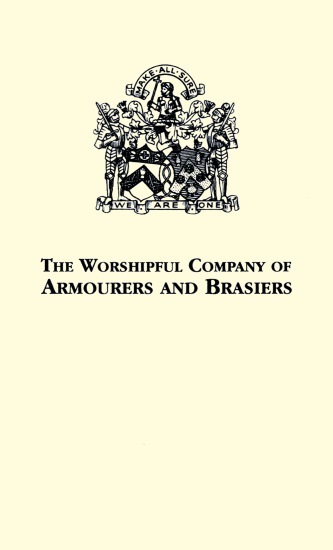
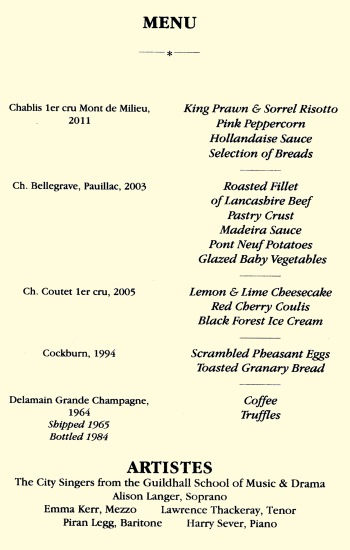

Livery Ladies' Dinner
June 2014, Armourers' Hall, London
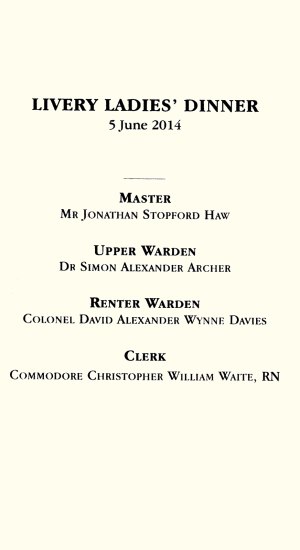
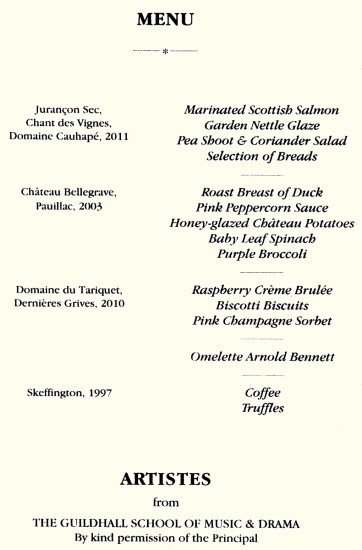

Livery Dinner
May 2014, Armourers' Hall, London
Freemen's Dinner
March 2014, Armourers' Hall, London
Livery Dinner
February 2014, Armourers' Hall, London
Court Dinner
January 2014, Armourers' Hall, London
Court Christmas Luncheon
December 2013, Armourers' Hall, London
Dartmouth Entry September 1958 - 55th Anniversary Dinner
September 2013, Armourers' Hall, London
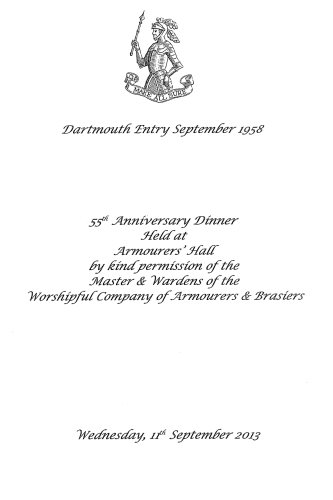
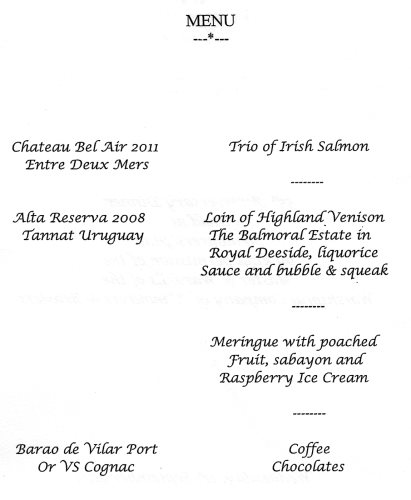
![]()
Court Dinner
June 2013, Armourers' Hall, London
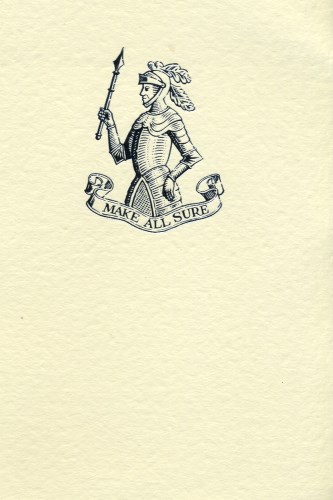
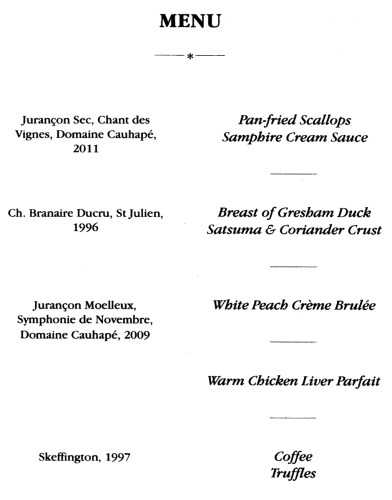
![]()
Livery Dinner
May 2013, Armourers' Hall, London
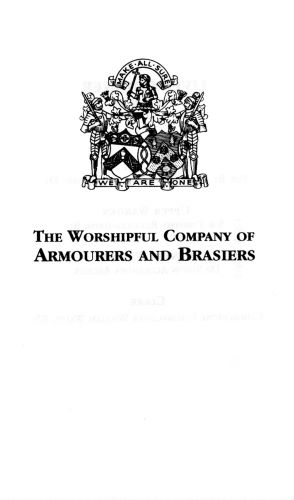

![]()
Court Dinner
January 2012, Armourers' Hall, London
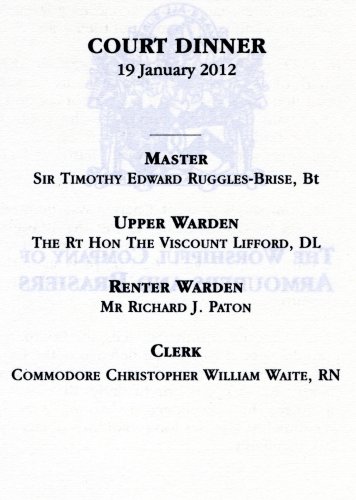
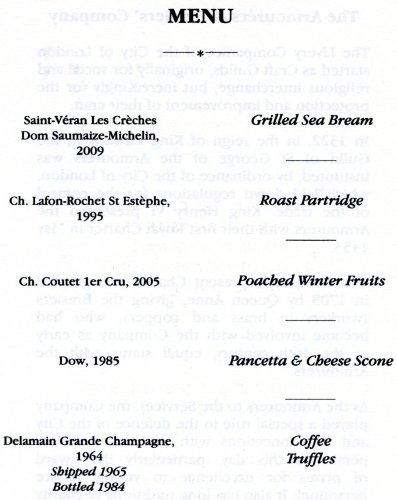
![]()
Court Ladies' Dinner
May 2011, Armourers' Hall, London
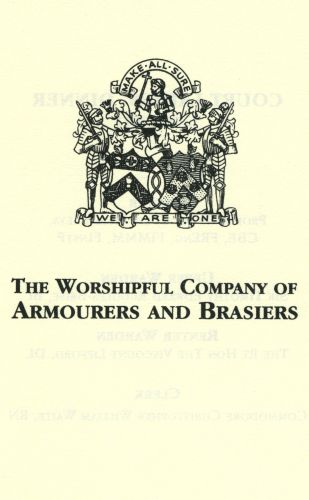
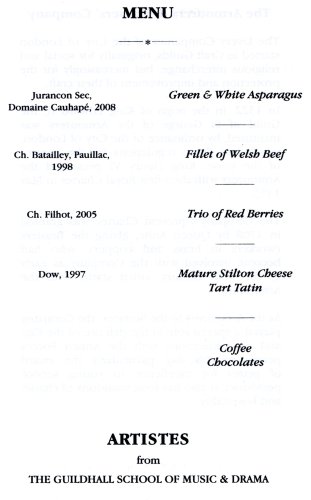
![]()
Armourers’ Hall
The site of the Hall was acquired by the Company
in 1428 when it was described as the Dragon and Five Shops. The
buildings were converted, extended and repaired, and in 1666
survived the Great Fire which was checked only a few yards away from
it.
In 1795, the Hall was enlarged, but the Court
decided in 1839 to rebuild the Hall completely which, together with
its furnishings, cost £10,533. Essentially this building is the
present Hall. It was designed by John Henry Good, the Company’s
Surveyor.
On the
29th December 1940, during a major blitz on London, the surrounding area was devastated,
but again the Hall survived. The Armourers and Brasiers’ Company are
much indebted to an unknown fireman who, seeing the curtains of the
Court Room ablaze, broke into the Hall and extinguished the flames.
Although his identity may never be known, his quick thinking
undoubtedly saved the Hall.
The Armourers & Brasiers’ Company
The Livery Companies of the City of London
started as Craft Guilds, originally for social and religious
interchange, but increasingly for the protection and improvement of
their craft.
In 1322, in the reign of King Edward II, the Guild
of St George of the Armourers was instituted, by ordinance of the
City of London, which laid down regulations for the control of the trade. King Henry VI
presented the Armourers with their first Royal Charter in May 1453.
The Company’s present Charter was granted in 1708
by Queen Anne, giving the Brasiers (workers in brass and copper),
who had become involved with the Company as early as the 16th
century, equal status with the Armourers.
As the Armourers to the Services, the Company
played a special role in the defence of the City and its connections
with the Armed Forces persist to this day, particularly the award of
prizes for excellence to young service personnel. It also has long
traditions of charity and hospitality.
Armourers & Brasiers’ Gauntlet Trust
The Trust was founded in 1979 and two thirds of its funds are devoted to the promotion of Materials Science, which is now the great pre- occupation of the Company. Materials Science is particularly appropriate to the Company because it is, like the making of armour and brass and copper ware, multidisciplinary and belongs to the area where pure science and engineering combine. The Company seeks to encourage education in science from primary to postdoctoral levels and has close connections with schools and universities throughout the United Kingdom. It also seeks to extend the use of materials science in commercial and industrial ways, has contacts with industry and has entered into partnership schemes with Rolls-Royce, Corus and AWE to further this. It works closely with the Institute of Materials, Minerals and Mining, the Institute of Physics and the Royal Society of Chemistry Its latest venture is to institute a prize of for the best scheme for the commercial use of materials. The last third of the Trust’s funds is used for the ancient charitable interests of the Company: the care of the young and the elderly, the exercise of the Christian Faith and the study of Arms and Armour.
![]()

